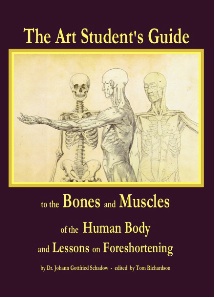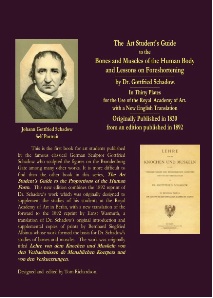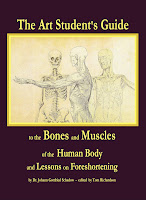|

Figure Drawing EbooksThe Art Student's
Guide to the Bones and Muscles of the Human Body
|
|
Learn How to Draw Perspective
�
Purchase the ebook by clicking the "Buy Now" button at the bottom of the page.
After completing the purchase you will be directed to a web page which will give you a link to the download site.
The Art Student's
Guide to the Bones and Muscles of the Human Body
and Lessons on Foreshortening
View sample pages at Google Books The Art Student's Guide to the Bones and Muscles of the Human Body Or view more of the available books at Figure-Drawings.com's Author Page Get it direct - and maybe a little faster - at CreateSpace.com |
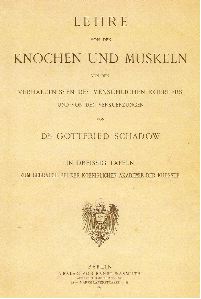
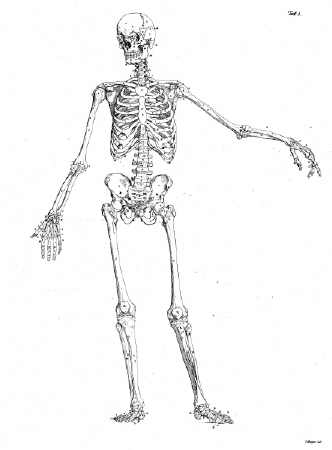
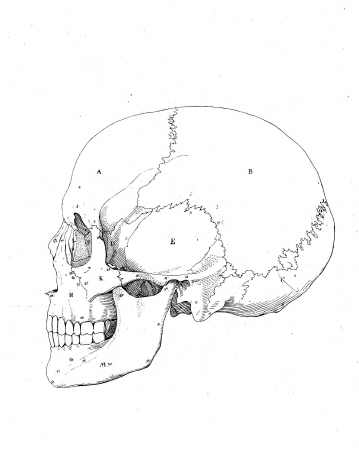
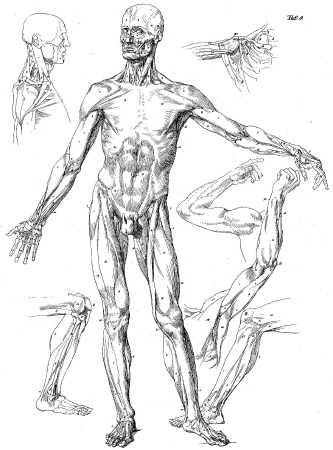

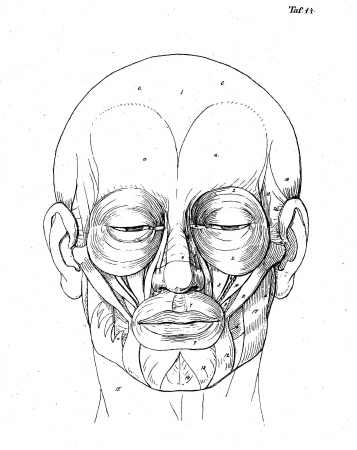
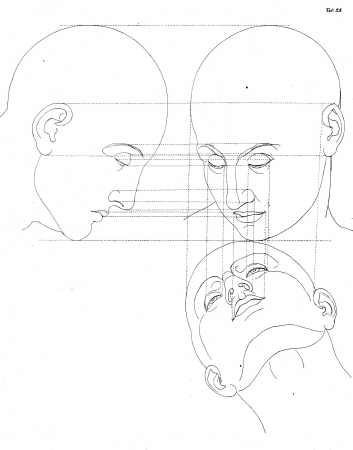
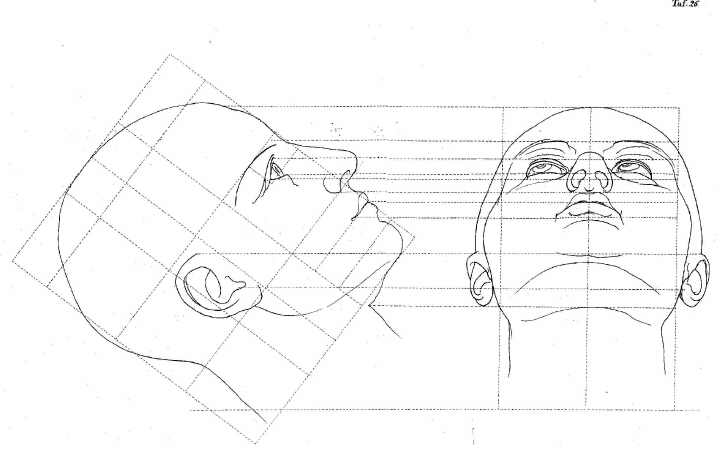
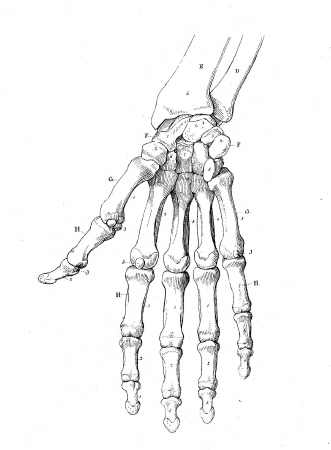
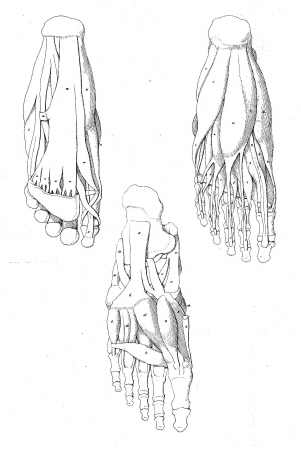
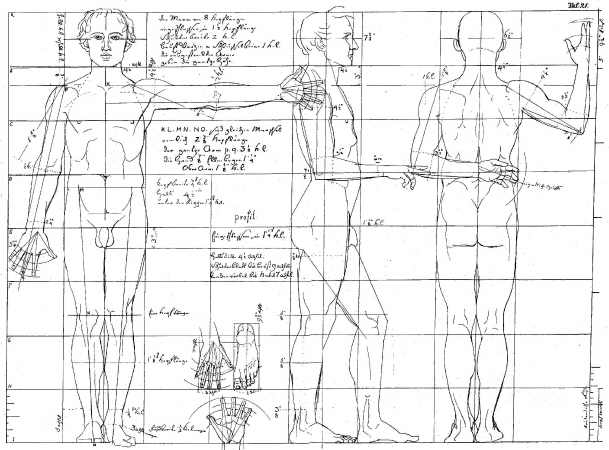
In Thirty Plates for Use at the Royal Academy of Arts
by Dr. Johann Gottfried Schadow
Originally Titled Lehre von den Knochen und Muskeln
von den
Verhaeltnissen des Menschlichen Koerpers
und von den Verkuerzungen
From an edition Published in 1892
Based on Dr. Schadow's original plates from 1830.
30 plates plus a 25 page introduction and treatise.
|
CONTENTS OF THE PLATES
Table 1, the male skeleton from the front. Table 2, same from the back side. Table 3, the same in profile. Table 4, the female skeleton. Table 5, the skull in natural size in face and profile. Table 6, the hand, as well as from inside and outside. Table 7,The foot, as well as from the front, top, inside and out. Table 8, the names of the bones. Table 9, all the male character, with the first layer of musles. Table 10, likewise from the back side. Table 11, likewise in profile. Table 12, the entire male figure from the front, showing the smooth muscles of the second layer. Table 13, likewise from the back side. Table 14, the head in natural size in face and profile with the first layer of muscles. Table 15, the hand, from inside and outside. Table 16, the foot, as well as from the front and in profile. Table 17, the names of the muscles. Table 18, the ratio of the human head, hand and foot in different age and gender. Table 19, the ratio of ideal heads and antique portraits. Table 20, Descriptive text of the panels 18 and 19. Table 21, the main conditions of the male figure from the front, profile and from the back. Tables 22, 23, 24, 25, 26, 27, heads of the child, the woman and the man after Albrecht Durer's procedure for foreshortening. Table 28, a male head after J. Cousins method foreshortened. Tables 29, 30, Foreshortened profiles. |
From a webpage by P. Brad Parker The Academy started in 1690 to 1697 based on the Paris Academy education system, the building was designed by the architect Johann Arnold Nering, and was located on Unter den Linden Strasse, in 1743 a fire destroyed the Academy. The Academy was primarily under the influence of the Dutch school of art. The last Fleming was Bernhardt Rode as Director of the Academy in 1783. In 1786 the building was restored, and the Academy refurnished with plaster casts, engravings, and drawings. A change of the education system was established by Daniel Nicholas Chodowiecki in 1786 as director, and then by Gottfried Schadow 1816. Gottfried Schadow as director brought in an expanded antique cast collection, as well as setting up the Rome Prize. In 1786 was also the first public exhibition of art in Prussia. This date was the institution of the Age of Enlightenment under Frederich Wilhelm II for the modernization of Prussia. Kaiser (Emperor) Wilhelm II supported traditions of European art that evolved from the influence of Greek antique, and refused the degenerate art of the modern. His main counsel was the painter, and Director of the Academy, Anton von Werner (1843-1915). Relevant with this period of art training, and production was the installment of the The Pergamon Altar, and further extensive Greek Hellenistic sculpture during then Wilhelminian Germany. |
|
From History and bibliography of Artistic Anatomy
By Boris Röhrl Miyuki Ozeki The History of the Kuenigliche Akademie der Kuenste zu Berlin The Royal Academy of the Arts in Berlin was, in 1696, the third public art academy to be founded in Europe, after Rome and Paris. However throughout the 18th century it was no more than a small private school of little importance. Only after two reforms executed about 1800 was it enlivened and reborn as the most modern institution for art education in German-speaking countries. While the first refom since 1786 was led by the teachers and concerned the methodology of teaching art based on neo-classical asthetics, the second reform of 1809 was instigated by ministers and aimed at reorganizing the whole cultural administration in Prussia. With the foundation of a ministry for culture the academy achieved its independence from the unstable patronage of the monarchy, enabling its continuous development under the initiative of the director Gottfried Schadow. But its mechanical and overloaded teaching curriculum gradually estranged its pupils . By introducing a "Meisterklasse (master course)" at the Duesseldorfer academy Wilhelm Schadow extended the horizon of art education. However, he simultaneously disclosed its duality : Is art democratic enough to be achieved by the educational systems offered by the art schools? Or does art only derive from the genius of an individual person? The separation of the educational department from the Berliner academy in the year 1875, as a result of which the Hochschule der Kuenste was founded, symbolizes the contradictory task of an art academy which originally started as a liberal society of free artists and ended as an art school that regulated the artistic development of the individual. |
Additional information at my Blog: Figure Drawing, The Art Student's Guide to the Bones and Muscles of the Human Body.
DOWNLOAD THE E-BOOK The Art Student's Guide to the Bones and Muscles of the Human Body
by Dr. Gottfried Schadow
Compare at
$650.00 --- $14.95
|
DOWNLOAD THE E-BOOK
Buy now with Paypal.
If you are new to PayPal you will be directed to a PayPal sign up page
or you will be allowed to
pay directly by credit card.
|
|
Johann Gottfried Schadow was a talented neo-classical sculptor working in Berlin in the late eighteenth and early nineteenth centuries. He is famous for the quadriga on the Brandenburger Tor and the bust of Friederike von Preußen.
He became director of the Royal Academy of Art in Berlin in 1816 and this book is his first work dedicated to the instruction of his students in the basic anatomy of the human body. He used the prints of Albinus as a starting point and developed clear images of the bone structure and the muscular structure of the human body so that artists and sculptors would have a firm footing as they pursued their craft. To these plates he added three plates on human proportions, a comparison of heads of youth and adult and old age, and a comparison of male and female, a second plate of typical proportions of the human form, and a third on the proportions of ideal form using classical Greek sculpture as the examples.
He expanded on the plates on proportion and added 27 more plates to make his second book for students titled in English The Sculptor and Art Student's Guide to the Proportions of the Human Form or in the original German, Atlas Zu Polyclet Oder Von Den Maassen Des Menschen Nach Dem Geschlechte Und Alter. Books at Amazon.com: The Art Student's Guide to the Bones and Muscles of the Human Body: and Lessons on Foreshortening The Art Student's Guide To The Proportions Of The Human Form
|
These antique sculptures are the ones Dr. Schadow used to develop his study of he proportions of ideal heads on Plate 19.
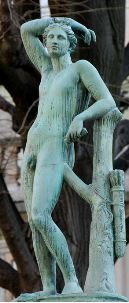
Apollino |
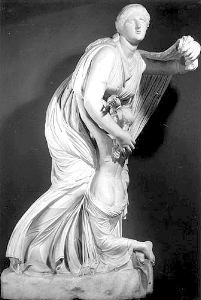
Niobe |
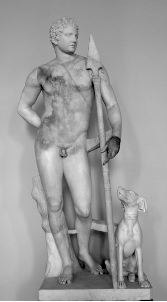
Meleager |
|
Faustina |
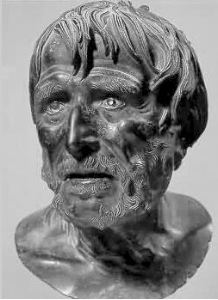
Seneca |
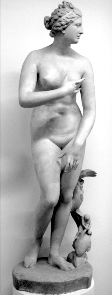
Venus Medicis |
|
If you prefer to purchase the ebook on CD for $18.95 please email me at: lifedraw2005@yahoo.com include your name and address and I will contact you with instructions. |
You will need Adobe Acrobat Reader (c) to view the PDF file.
If you do not have a copy of Adobe Acrobat Reader you may download a free copy of the latest version here:
Acrobat Reader Download Site
If you experience any trouble downloading the e-book please click on this link: Detailed Download Instructions
If you are still experiencing trouble email me at:lifedraw2005@yahoo.com and I will contact you to help with the download or email you the file.
Books by Johann Gottfried Schadow:
|
Lehre von den Knochen und Muskeln, von den Verhaltnissen des menschlichen Korpers und von dem Verkiirzen, In jo Tafeln zum Gebrauch bei der Akademie der Kiinste. Berlin, 1830. fol.
Atlas Zu Polyclet Oder Von Den Maassen Des Menschen Nach Dem Geschlechte Und Alter The sculptor and art students' guide to the proportions of the human form Polyclet;: An analysis of measurements and proportions of the human figure for artists and sculptors; |
Wikipedia Deutschland
Bild Index Gottfried Schadow
Monuments in Berlin - Brandenburger Gate
Johann Gottfried Schadow (Klassiker der Karikatur)
Anmut und Schonheit: Schadows Prinzessinnengruppe und ihre Stellung in der Skulptur des Klassizismus
Johann Gottfried Schadow, 1764-1850, der Bildhauer
Johann Gottfried Schadow
The Qadriga Brandenburg Tor(gate) Berlin
http://www.art-perfect.de/johann-gottfried-schadow.htm
Kunstschatze aus Gips More than 6000 reliefs and scultures including the princess-group of Johann Gottfried Schadow.
This new edition is copyright 2009, the original images in it are believed to be in the public domain based on their age and publishing date. If you have information to the contrary please email me: lifedraw2005@yahoo.com
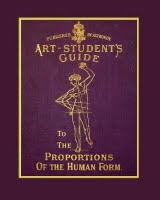 The Sculptor and Art Student's Guide to the Proportions of the Human Form By Dr. Johann Gottfried Schadow $14.95 |
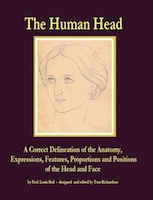 The Human Head - A Correct Delineation of the Anatomy, Expressions, Features, Proportions and Positions of the Head and Face by Prof. Louis Bail $12.95 |
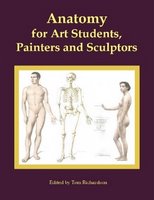 Anatomy for Artists Painters and Sculptors by Dr. Julien Fau $14.95 |
|
Search for an original German Edition at
Abebooks.com
|
